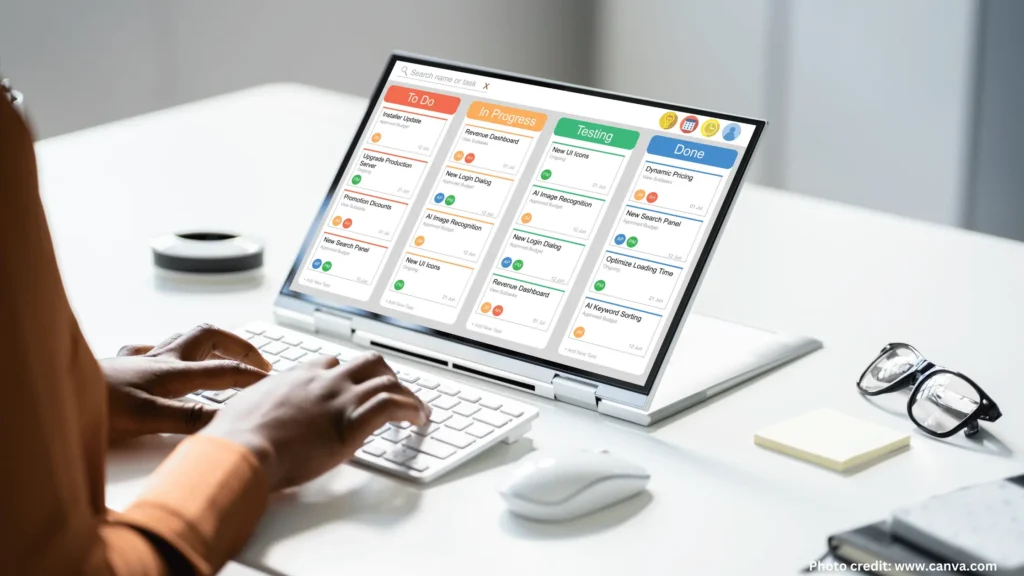
In today’s fast-paced business environment, small and medium businesses (SMBs) across the United States face unprecedented challenges in managing their daily operations efficiently. According to recent studies, nearly 50% of SMB owners report struggling with administrative tasks due to limited resources, highlighting a critical need for flexible support solutions. Enter the freelance business assistant – a game-changing solution that’s revolutionizing how American SMBs handle their operational needs.
The Rising Demand for Freelance Business Assistants in the USA
The landscape of business support has evolved dramatically in recent years. With the shift toward remote work accelerated by recent global events, American businesses have increasingly turned to freelance business assistants as a cost-effective solution for managing their operations. The U.S. freelance economy grew by 36% in 2023 alone, with business support services being one of the fastest-growing segments.
Why SMBs Need Freelance Business Assistants
Small and medium businesses in the United States face unique challenges that make freelance business assistants particularly valuable:
- Time constraints for core business activities
- Limited resources for full-time staff
- Need for specialized skills on a flexible basis
- Rising operational costs
- Increasing administrative burden
Understanding the Role of a Freelance Business Assistant

Core Responsibilities
Modern freelance business assistants offer a wide range of services tailored to SMB needs:
- Administrative Support
- Email management and correspondence
- Calendar organization and scheduling
- Document preparation and filing
- Travel arrangements
- Customer Service
- Client communication
- Inquiry handling
- Customer support coordination
- Follow-up management
- Financial Tasks
- Basic bookkeeping
- Invoice processing
- Expense tracking
- Payment follow-ups
- Digital Marketing Support
- Social media management
- Content scheduling
- Email marketing assistance
- Marketing campaign coordination
The Financial Impact: Cost-Benefit Analysis
Cost Structure
Current market rates for freelance business assistants in the USA typically fall into these categories:
- Entry-level: $15-25/hour
- Mid-level: $25-40/hour
- Expert-level: $40-60+/hour
Cost Savings Compared to Full-Time Employees
When comparing costs with full-time employees, SMBs can save significantly:
- No benefits packages required
- No overhead costs
- Flexible hours and payment structures
- No training or onboarding expenses
How to Find and Hire the Right Freelance Business Assistant
Sourcing Channels
- Professional Platforms
- Specialized Virtual Assistant Services
Essential Skills to Look For
When hiring a freelance business assistant, prioritize these key skills:
- Technical Proficiency
- Microsoft Office Suite
- Project management tools
- Communication platforms
- CRM systems
- Soft Skills
- Communication
- Time management
- Problem-solving
- Adaptability
READ ALSO: How to Start and Grow a Lucrative Florist Side Hustle in the USA
Best Practices for Working with Freelance Business Assistants
Setting Up for Success
- Clear Communication Protocols
- Regular check-ins
- Preferred communication channels
- Response time expectations
- Reporting structures
- Project Management Systems
- Task tracking tools
- Time management software
- Document sharing platforms
- Collaboration tools
Real-World Success Stories

Case Study 1: Tech Startup in Silicon Valley
When CloudTech Solutions, a promising SaaS startup in Silicon Valley, began experiencing rapid growth in 2023, their founding team found themselves overwhelmed with administrative tasks that took time away from product development and client acquisition. The solution came in the form of Sarah Chen, a freelance business assistant with experience in the tech industry.
Key Challenges:
- Founders spending 30+ hours weekly on administrative tasks
- Disorganized customer support system
- Inefficient meeting scheduling and calendar management
- Backlog of expense reports and invoices
Implementation: Sarah was initially hired for 20 hours per week to handle:
- Calendar management and meeting coordination
- Email inbox organization
- Basic customer support triage
- Expense tracking and invoice processing
Results After 6 Months:
- 70% reduction in founders’ administrative workload
- Customer response time improved from 24 hours to 2 hours
- Meeting scheduling efficiency increased by 85%
- Cost savings of $45,000 compared to hiring a full-time executive assistant
- Successfully scaled from supporting 3 founders to a team of 12
Case Study 2: Family-Owned Retail Business in Chicago
The Martinez Family Furniture Store, a third-generation business in Chicago’s Lincoln Park neighborhood, struggled to maintain their online presence while managing their busy showroom. In late 2023, they hired Maria Rodriguez, a freelance business assistant, to help modernize their operations.
Initial Situation:
- 80% of staff time spent on administrative tasks
- Outdated inventory management system
- Inconsistent social media presence
- Manual appointment booking system
Solutions Implemented: Maria worked 25 hours per week focusing on:
- Digitizing inventory management
- Implementing an online appointment booking system
- Managing social media accounts
- Handling customer follow-ups and reviews
Impact:
- Reduced administrative tasks by 60%
- Increased social media engagement by 150%
- Saved $32,000 annually compared to hiring full-time staff
- Improved customer satisfaction ratings from 3.8 to 4.7 stars
- 35% increase in appointment bookings through new online system
Case Study 3: Professional Services Firm in New York
Anderson & Partners, a boutique consulting firm in Manhattan, faced challenges managing their growing client base while maintaining high service standards. They engaged Tom Wilson, a freelance business assistant with a background in professional services, to help streamline their operations.
Initial Challenges:
- Inconsistent client communication
- Disorganized document management
- Time-consuming proposal creation process
- Inefficient billing procedures
Strategic Changes: Tom was brought on for 30 hours per week to:
- Implement a new CRM system
- Standardize proposal templates
- Create automated client follow-up processes
- Streamline billing and invoicing procedures
Measurable Outcomes:
- Reduced proposal creation time by 65%
- Improved client response time by 80%
- Decreased billing cycles from 45 to 15 days
- Saved approximately $55,000 annually in operational costs
- Increased client retention rate from 75% to 92%
Key Takeaways from All Cases
Cost-Effective Scaling
- All three businesses achieved significant cost savings compared to traditional hiring
- Flexible hours allowed for adjustment based on business needs
Process Improvement
- Implementation of digital tools and automation
- Standardization of routine procedures
- Better organization and documentation
Business Impact
- Improved customer satisfaction
- Increased efficiency in daily operations
- Better resource allocation for core business activities
ROI Validation
- Quantifiable improvements in key metrics
- Significant cost savings
- Measurable productivity increases
Common Challenges and Solutions
Challenge 1: Remote Communication
Solution: Implement structured communication protocols and utilize appropriate tools
Challenge 2: Time Zone Differences
Solution: Establish clear availability windows and use scheduling tools
Challenge 3: Task Management
Solution: Utilize project management software and set clear expectations
Future Trends in Freelance Business Assistance
Emerging Technologies
- AI integration
- Automation tools
- Virtual collaboration platforms
- Cloud-based solutions
Industry Predictions
- Growth projections
- Evolving service offerings
- Market rate trends
- Skill requirement changes
Conclusion
The role of freelance business assistants in supporting small and medium businesses continues to evolve and expand. As we’ve explored throughout this guide, the right freelance assistant can transform your operations, improve efficiency, and contribute significantly to your business growth.
Ready to transform your business operations with a freelance business assistant? Start by assessing your needs and using the guidelines in this article to find the perfect match for your business. Remember to:
- Define your specific requirements
- Set clear budgets and expectations
- Establish proper communication channels
- Implement recommended management tools
- Monitor and adjust as needed
Frequently Asked Questions About Freelance Business Assistants
Q: How do I know if my business needs a freelance business assistant?
A: Consider hiring a freelance business assistant if you:
- Spend more than 15-20% of your time on administrative tasks
- Feel overwhelmed with email and calendar management
- Struggle to keep up with customer inquiries
- Need specialized skills for specific projects
- Want to scale operations without committing to full-time employees
- Find yourself working overtime on routine tasks
Q: What is the typical cost range for freelance business assistants in the USA?
A: Current market rates as of 2024:
- Entry-level (0-2 years experience): $15-25/hour
- Mid-level (2-5 years experience): $25-40/hour
- Expert-level (5+ years experience): $40-60+/hour
- Specialized skills (technical, financial, etc.): $60-100+/hour
Note: Rates may vary based on location, industry, and specific skill requirements. Many assistants also offer package deals or retainer options for regular hours.
Q: What tasks can I delegate to a freelance business assistant?
A: Common tasks include:
Administrative:
- Email management
- Calendar scheduling
- Travel arrangements
- Document preparation
- File organization
Customer Service:
- Responding to inquiries
- Managing support tickets
- Following up with clients
- Handling complaints
Financial:
- Basic bookkeeping
- Invoice processing
- Expense tracking
- Payment follow-ups
Marketing:
- Social media management
- Content scheduling
- Email campaign coordination
- Website updates
Q: How do I ensure data security when working with a freelance assistant?
A: Implement these security measures:
- Use secure password management systems
- Set up two-factor authentication
- Create separate user accounts with appropriate access levels
- Have a clear data handling policy
- Sign comprehensive NDAs and confidentiality agreements
- Use encrypted communication channels
- Regular security audits of shared systems
Q: What’s the typical onboarding process for a freelance business assistant?
A: A successful onboarding typically includes:
Week 1:
- Initial meeting and goal setting
- System access setup
- Communication protocols establishment
- Basic training on company procedures
Week 2:
- Shadowing key processes
- Setting up workflow systems
- Establishing reporting mechanisms
- Creating standard operating procedures
Weeks 3-4:
- Gradual task handover
- Regular check-ins
- Performance monitoring
- Feedback and adjustments
Q: How do I measure the ROI of hiring a freelance business assistant?
A: Track these key metrics:
- Time saved on administrative tasks
- Cost savings compared to full-time employees
- Improvement in response times
- Customer satisfaction ratings
- Project completion rates
- Revenue generated from freed-up time
- Reduction in overtime hours
Q: What tools and software should I provide to my freelance assistant?
A: Essential tools include:
- Project management software (e.g., Asana, Trello)
- Communication platforms (e.g., Slack, Zoom)
- File sharing systems (e.g., Google Workspace, Dropbox)
- Time tracking tools (e.g., Toggl, Harvest)
- CRM systems (as needed)
- Industry-specific software
Q: How do I handle time zone differences with a remote freelance assistant?
A: Best practices include:
- Establish clear working hours overlap
- Use scheduling tools that account for time zones
- Set expectations for response times
- Plan ahead for urgent tasks
- Use asynchronous communication when appropriate
- Schedule regular check-ins at convenient times for both parties
Q: What should be included in a contract with a freelance business assistant?
A: Key contract elements:
- Scope of work and deliverables
- Payment terms and rates
- Working hours and availability
- Communication expectations
- Confidentiality clauses
- Data security requirements
- Termination conditions
- Intellectual property rights
- Dispute resolution process
Q: How can I ensure quality work from a freelance business assistant?
A: Implement these quality control measures:
- Clear performance metrics
- Regular feedback sessions
- Standard operating procedures
- Quality checking systems
- Progress tracking tools
- Regular performance reviews
- Clear communication channels
In another related article, Business Development Manager Salary in the USA




